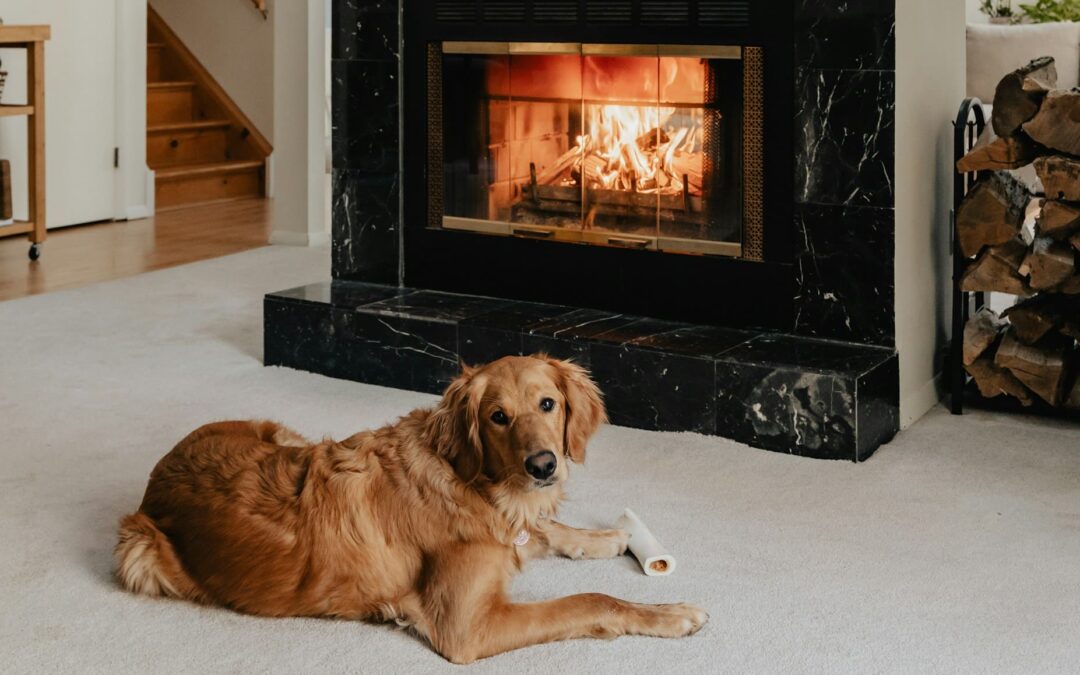Most people go to great lengths to keep their pets safe—from locking up cleaning supplies and hiding electrical cords, to finding pet-safe flowers and choosing the right food. But there’s one hidden danger that often gets overlooked: carbon monoxide.
This colorless, odorless, tasteless gas is impossible to detect without a proper alarm. And since our pets can’t tell us when something is wrong, we need to learn how to recognize the symptoms of carbon monoxide (CO) poisoning in pets. If you don’t already have a carbon monoxide detector in your home, this is your sign to get one!
Why Is Carbon Monoxide So Dangerous to Pets?
Carbon monoxide is produced any time fuel burns. Think gas stoves, fireplaces, furnaces, or car engines. When appliances malfunction or ventilation is poor, CO can build up indoors and become extremely dangerous. And it can happen fast.
Pets are more sensitive to the effects of CO exposure than people are. They’re smaller, they breathe faster, and they spend more time at home. They’re also closer to the floor, where CO tends to accumulate.
Symptoms of Carbon Monoxide Poisoning in Pets
While carbon monoxide poisoning in dogs and cats looks similar, there are a few differences in how it shows up:
- Cats may hide when they’re not feeling well, so the early symptoms might be harder to notice.
- Dogs tend to be more outwardly expressive, so signs like panting, wobbling, or collapsing may appear more quickly.
Knowing the signs can help you act quickly in an emergency. Common symptoms of carbon monoxide poisoning in pets include:
- Sudden weakness or lethargy
- Difficulty breathing or rapid breathing
- Bright red gums
- Vomiting
- Loss of coordination
- Seizures
- Unresponsiveness
If your pet is showing any of these symptoms and you suspect carbon monoxide exposure, get everyone—humans and animals—out of the house immediately and call emergency services. Then, contact your veterinarian for further instructions.
Why Every Pet Owner Needs a Carbon Monoxide Detector
A carbon monoxide detector is a simple, affordable tool that could save your pet’s life. Since pets can’t escape the house or tell you something’s wrong, an early warning is their only protection—especially if it happens while you’re asleep or away.
Ideally, you should place carbon monoxide detectors on every floor of your home, especially near the bedrooms and your pet’s main living area. Some smart detectors will even alert your phone when they go off, so you don’t have to worry about your pet while you’re away.
Better Safe Than Sorry
We know you’d do anything to keep your pets safe. Adding a carbon monoxide detector is one small change that can make a huge difference. It’s a simple, inexpensive step that could save your pet’s life—and yours.
If you ever have concerns about your pet’s health or want more advice on creating a safer home environment, our team at Anasazi Animal Clinic is always here to help. Contact us today to schedule a checkup or consultation with one of our veterinarians.
Photo by Clay Banks on Unsplash used with permission under the creative commons license for commercial use 04/18/2025

